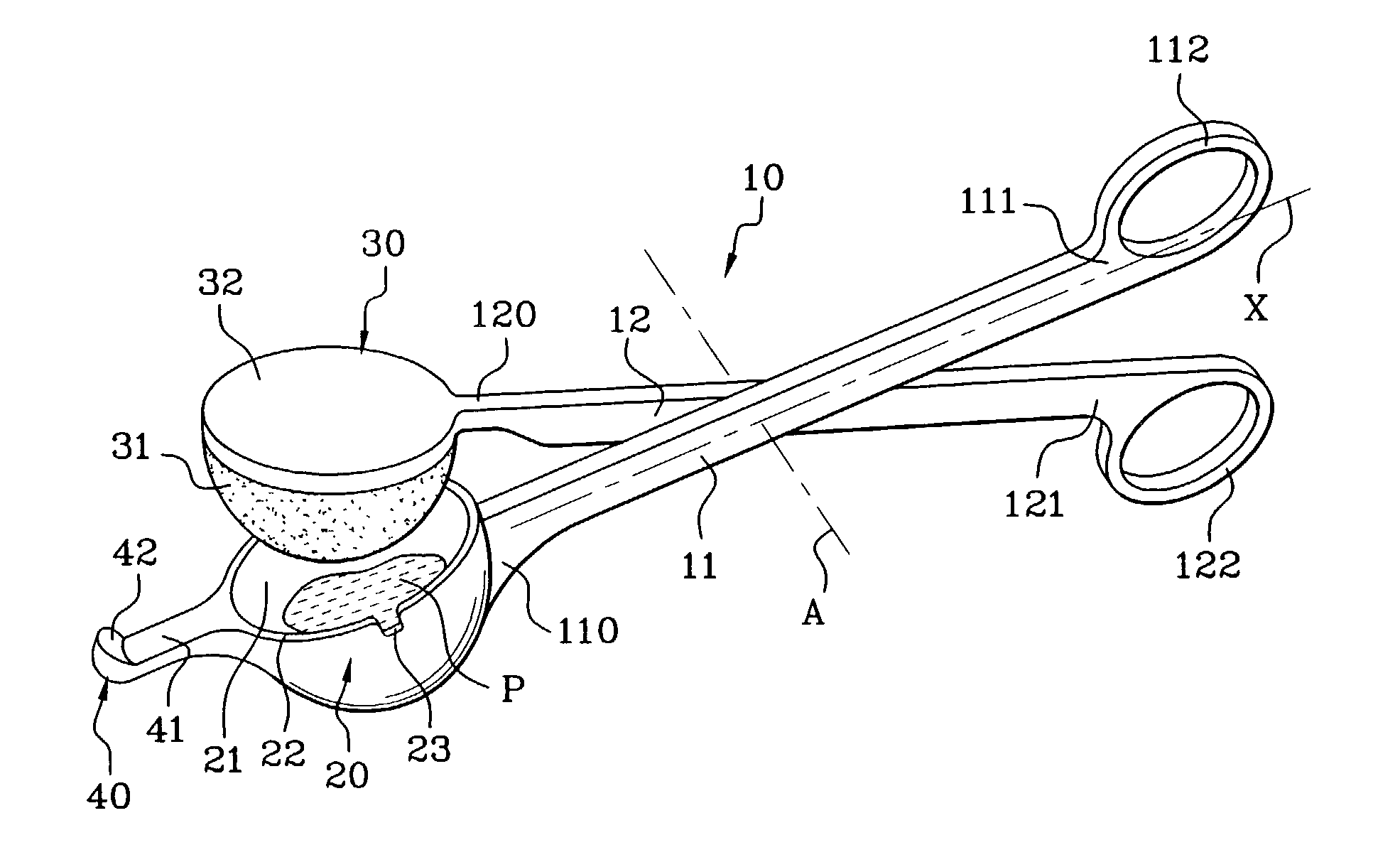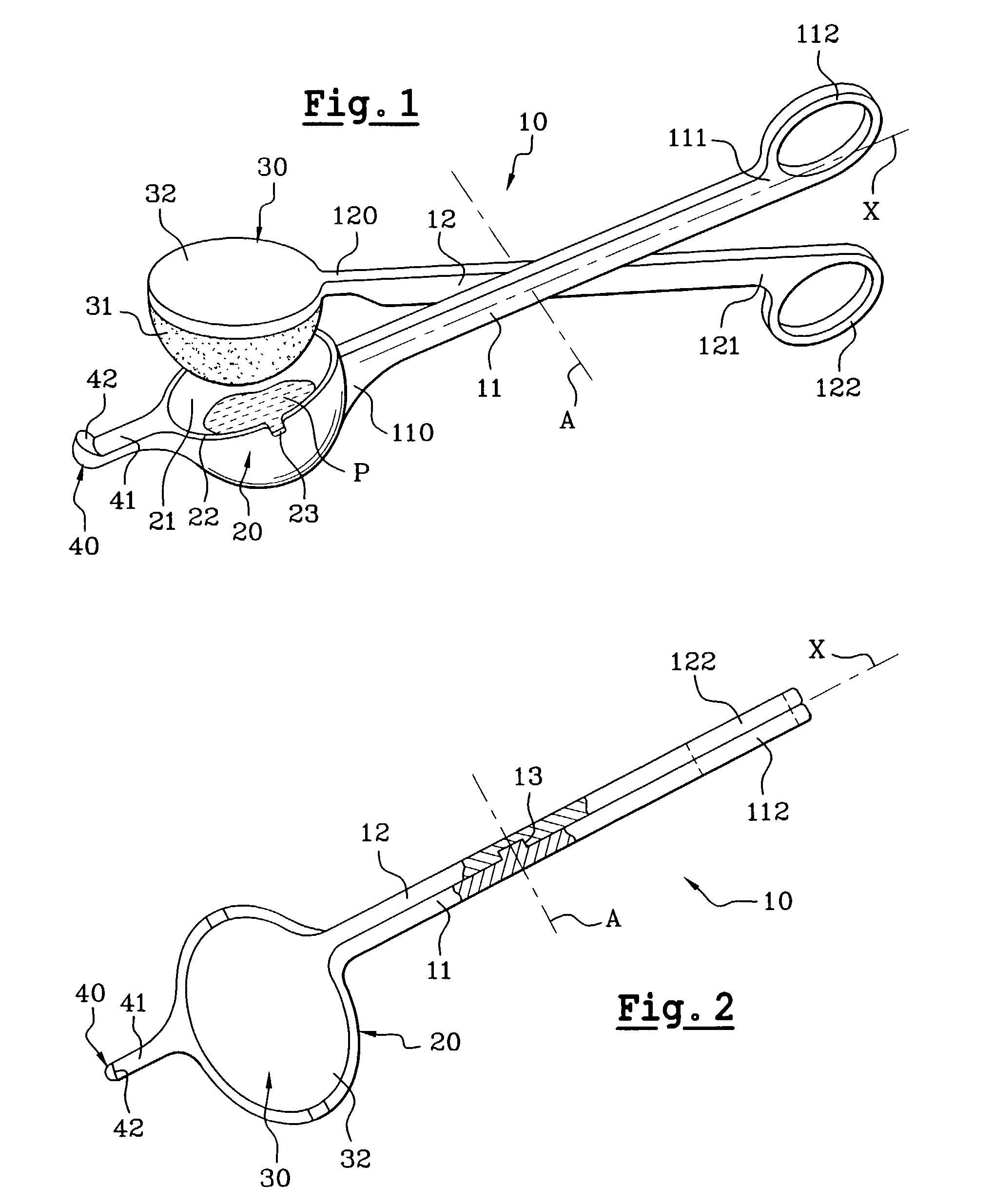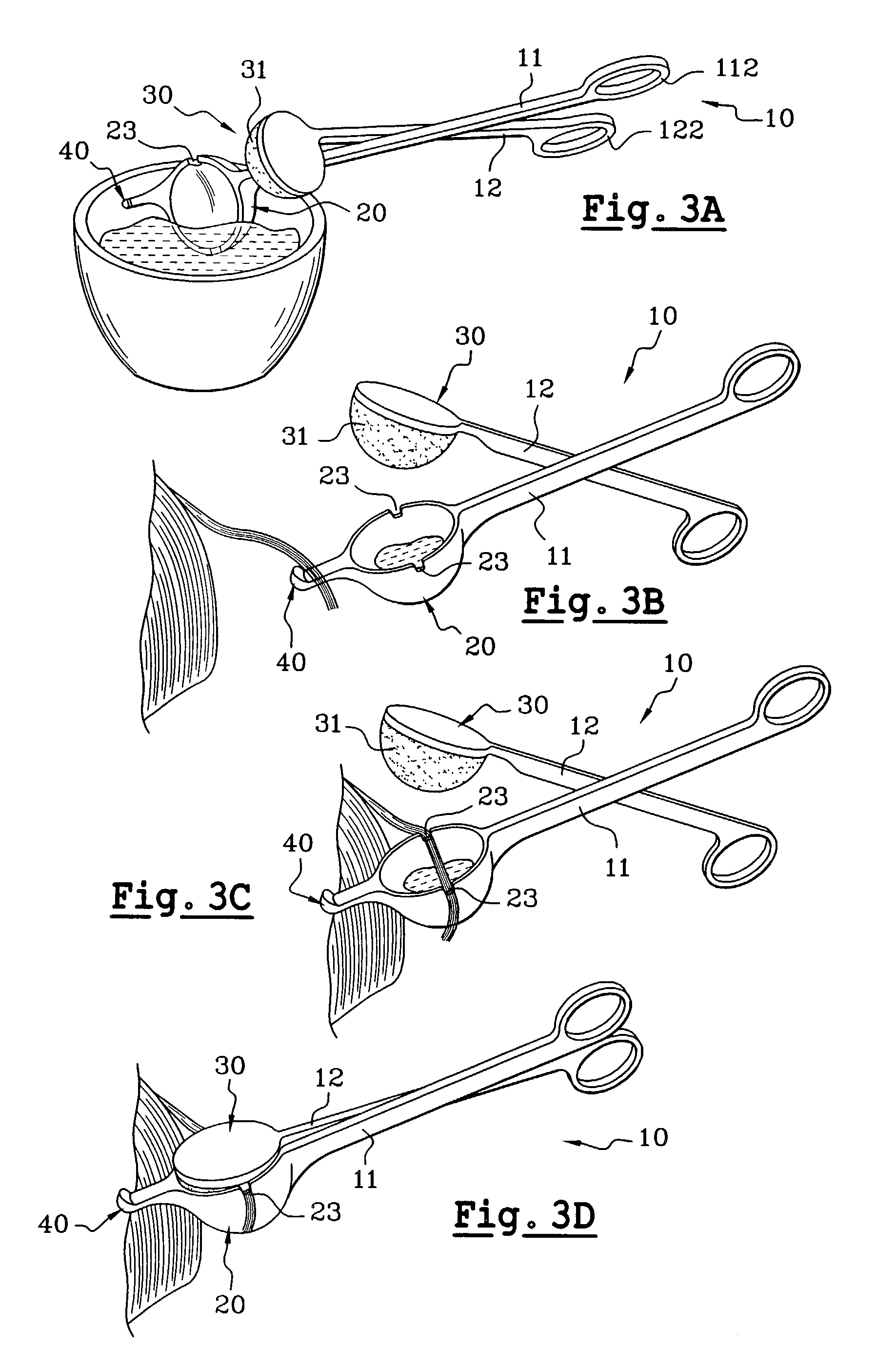Device for the application of a hair product to sections of hair
a hair product and hair technology, applied in the field of hair product application devices, can solve the problems of affecting the natural appearance of the hair, and the tedious technique of dyeing caps, so as to avoid or minimize the drawbacks
- Summary
- Abstract
- Description
- Claims
- Application Information
AI Technical Summary
Benefits of technology
Problems solved by technology
Method used
Image
Examples
first embodiment
[0037]FIGS. 1 to 3 depict the device 10 for the application of a hair product to sections of hair of a hair product. The device 10 includes two arms 11 and 12 hinged to each other so as to be able to pivot about an axis A. In the preferred form illustrated, the two arms are of approximately the same length. By way of example, the arms can be snap-fitted together utilizing a projection 13 on one of the arms which fits into an orifice on the other arm so as to provide a pivot coupling about the axis A similar to that utilized in a pair of scissors. As an alternative, the two arms may be riveted together or coupled by other fastening expedients to provide a hinge or pivot coupling. Each arm is preferably formed as a single molded piece, and the arms are then fitted together. It is to be understood, however, that it is also possible to form the arms of multiple pieces. The two arms are preferably made from a thermoplastic material such as a polyolefin. According to one of the advantageo...
second embodiment
[0050]The second embodiment shown in FIG. 4 is identical to that described in conformity with FIGS. 1 to 3 as far as the cavity 20 and retention member 30 are concerned. In this embodiment, the arms 11 and 12 have no rings at their ends 111 and 121. Each arm 11 and 12 has two angled portions 11a, 11b and 12a, 12b, respectively, situated on either side of the axis of rotation A. The portions 11b and 12b have respective ends 111 and 121 which act as the handles. When the portions 11a and 12a are approximately aligned, the portions 11b and 12b are separated. The portions 11b and 12b are connected to each other by a spring 14 in the manner of a pair of secateurs. The spring 14 works in compression and is mounted on the arms in such a way that when it is at rest, that is when not compressed by the user, the block of foam 31 is held inside the cavity 20. To remove the block of foam from the cavity, the user squeezes the two ends 111 and 121 of the two portions of the arms 11b and 12b toge...
third embodiment
[0051]The third embodiment shown in FIG. 5 is identical to that described in conformity with FIGS. 1 to 3 as far as the cavity 20 and retention member 30 are concerned, but this time it is made in one piece 100 so as to form U-shaped tongs. One of the free ends 101 of the arms of the U is provided with the cavity 20 and the other of the free ends 102 of the arms of the U is provided with the retention member 30. The two arms of the U pivot about an axis B situated, with this arrangement, at the base 103 of the U. In this embodiment, essentially the entire device can be formed as a single molding (except, e.g., the impregnatable or absorbable material associated with the retention member and / or the cavity).
PUM
 Login to View More
Login to View More Abstract
Description
Claims
Application Information
 Login to View More
Login to View More - R&D
- Intellectual Property
- Life Sciences
- Materials
- Tech Scout
- Unparalleled Data Quality
- Higher Quality Content
- 60% Fewer Hallucinations
Browse by: Latest US Patents, China's latest patents, Technical Efficacy Thesaurus, Application Domain, Technology Topic, Popular Technical Reports.
© 2025 PatSnap. All rights reserved.Legal|Privacy policy|Modern Slavery Act Transparency Statement|Sitemap|About US| Contact US: help@patsnap.com



